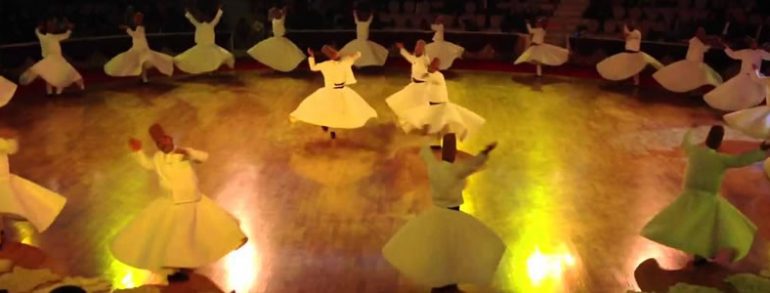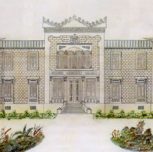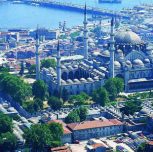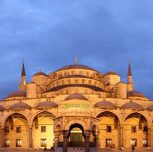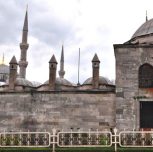As a part of the education of the disciples and the inspiration of Mevlâna, the Mevlevi Orderhas established a symbolic dance, called Sema, performed by the Dervishes, "Semazens". Literary meaning of sema is "hearing".
Brought under certain Mevlevi rules during late 15th century, Sema combined with soft music of the Turkish flute (ney) and double drum (kudüm) became an effective ceremony for the spiritual journey to the truth. Each of semazen's outfits has an emblematical meaning. His black cloak (tören hırkası) represents his physical existence, his long cylindrical woolen hat (sikke) represents the tomb of dervishes, and his white skirt (tennure) represents his shroud. The semazenbaşı (master of semazen) is like the moon and the Sheikh on his red sheepskin is Shams, the Sun.
Semahane (octagonal domed ritual hall) represents the universe. The essence of existing in the universe is to rotate; it is a very natural move of atoms, the earth, and the galaxies. Whirling is also a very human movement. Sema symbolizes a spiritual journey to becoming a "perfect-person" (kamil insan), the creation of the universe, the resurrection of man, and divine love. A Sufi fully understands the importance of the body, and the whirling of a Dervish is in complete harmony with the spiritual journey and with the cosmic movement.
The ceremony of the whirling dance consists of seven parts. In the first part, the dervish praises God's unity. The second part starts with the sound of the kudüm (double drum) emblematical of God's command "Let it be". The third part is the Divine Breath, which is represented by the sound of the ney (reed flute). The first breath grants life to everything. In the fourth part, the semazens greet one another three times and walk around in a circle. Semazens take off their black cloak (tören hırkası), representing their birth into the eternal spiritual world.
Each semazen kisses the hand of the Sheikh (Postnişin), who sits on the sheepskin during the sema ceremony, to receive the permission to participate in the sema. After then they begin to whirl counter-clockwise. The semazen have their arms outstretched, holding the right palm open to the heavens and the left pointing to the earth. It means; "We receive from God, and we give to man." We hold nothing for ourselves.
The central (fifth) part of the sema consists of four "selams" (salutations), which represent various phases in the spiritual journey of dervish. The first selam represents that the semazen recognizes his own condition as an individual created by God. The second selam represents the admiration of God's greatness and supremacy, and witnessing the magnificence in creation. The third selamrepresents the transformation of his awe into love. The fourth selam represents the return to his foremost task, which is servanthood. Before the completion of selams, this serenity of the completed spiritual journey continues with the sound of a ney (a stringed instrument).
The ceremony concludes with reading of the Quran in the sixth and prayers in the seventh part of the Sema ritual.
Erzen, Jale, (2009), "The Dervishes Dance - The Sacred Ritual of Love", Contemporary Aesthetics, Vol.6,


